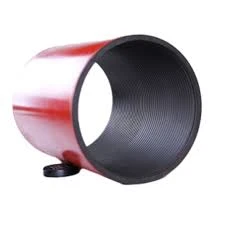- Afrikaans
- Albanian
- Amharic
- Arabic
- Armenian
- Azerbaijani
- Basque
- Belarusian
- Bengali
- Bosnian
- Bulgarian
- Catalan
- Cebuano
- Corsican
- Croatian
- Czech
- Danish
- Dutch
- English
- Esperanto
- Estonian
- Finnish
- French
- Frisian
- Galician
- Georgian
- German
- Greek
- Gujarati
- Haitian Creole
- hausa
- hawaiian
- Hebrew
- Hindi
- Miao
- Hungarian
- Icelandic
- igbo
- Indonesian
- irish
- Italian
- Japanese
- Javanese
- Kannada
- kazakh
- Khmer
- Rwandese
- Korean
- Kurdish
- Kyrgyz
- Lao
- Latin
- Latvian
- Lithuanian
- Luxembourgish
- Macedonian
- Malgashi
- Malay
- Malayalam
- Maltese
- Maori
- Marathi
- Mongolian
- Myanmar
- Nepali
- Norwegian
- Norwegian
- Occitan
- Pashto
- Persian
- Polish
- Portuguese
- Punjabi
- Romanian
- Russian
- Samoan
- Scottish Gaelic
- Serbian
- Sesotho
- Shona
- Sindhi
- Sinhala
- Slovak
- Slovenian
- Somali
- Spanish
- Sundanese
- Swahili
- Swedish
- Tagalog
- Tajik
- Tamil
- Tatar
- Telugu
- Thai
- Turkish
- Turkmen
- Ukrainian
- Urdu
- Uighur
- Uzbek
- Vietnamese
- Welsh
- Bantu
- Yiddish
- Yoruba
- Zulu
Exploring Well Casing Couplings for Enhanced Oil and Gas Extraction Efficiency
Understanding Well Casing Couplings Importance and Applications
Well casing couplings play a vital role in the oil and gas industry, serving as connectors that link sections of casing pipes. These couplings help maintain the structural integrity of wells, ensuring they can withstand the intense pressures and harsh environments encountered during drilling and production. The significance of well casing couplings is often underestimated, yet they are crucial for the safety, efficiency, and longevity of well operations.
The Basics of Well Casing
Before delving into the specifics of couplings, it is essential to understand the concept of well casing. Casing refers to the steel pipes that are installed in the drilled wellbore to stabilize the hole, prevent contamination of groundwater, and facilitate the extraction of resources. As drilling progresses to deeper depths or more challenging environments, multiple sections of casing—often referred to as strings—are used. Each section requires a coupling to connect seamlessly with the next.
Types of Couplings
There are several types of couplings used in well casing, each designed for specific applications and conditions. The most common types include
1. Slip-On Couplings These are simple couplings that slide over the ends of the casing pipes and are typically welded in place. They are used primarily for low-pressure applications.
2. Threaded Couplings Featuring threaded ends, these couplings allow for quick assembly and disassembly. They provide a strong connection, making them suitable for high-pressure environments.
3. Welded Couplings These are designed for permanent connections, where parts are welded together for added strength and leak-proof integrity.
well casing coupling

4. Specialty Couplings These include customized designs tailored for unique environmental conditions, such as high temperatures, corrosive environments, or specific pressure requirements.
Importance of Coupling Quality
The quality of the couplings directly impacts the overall performance and safety of the well. High-quality couplings provide excellent tensile strength, resistance to corrosion, and the ability to withstand fluctuating pressure and temperature. Conversely, inferior couplings can lead to structural failures, leaks, and even catastrophic accidents, resulting in significant financial losses and environmental risks.
Installation and Maintenance
Proper installation of well casing couplings is critical. Installers must ensure that the couplings are aligned correctly and bonded securely to the casing pipes. Regular inspection and maintenance are equally essential to identify signs of wear or corrosion that could compromise integrity over time. Advanced techniques and technologies, such as non-destructive testing (NDT), are increasingly employed to monitor the health of these couplings throughout the lifecycle of the well.
Innovations in Coupling Technology
Advancements in materials science and engineering have led to the development of innovative coupling solutions that enhance performance and durability. For example, the use of corrosion-resistant alloys and coatings has become more prevalent, particularly in offshore drilling and environments that are prone to corrosion. Moreover, smart coupling technologies equipped with sensors can provide real-time data on pressure, temperature, and structural integrity, enabling proactive management of well operations.
Conclusion
In summary, well casing couplings are a crucial yet often overlooked component of the drilling process. They ensure the structural integrity of wells, enabling efficient and safe extraction of hydrocarbon resources. The importance of selecting high-quality couplings, understanding the different types available, and maintaining them effectively cannot be overstated. As the oil and gas industry continues to evolve, innovations in coupling technology will play a significant role in enhancing well performance and sustainability, safeguarding both economic interests and environmental health for future generations.
-
Tubing Pup Joints: Essential Components for Oil and Gas OperationsNewsJul.10,2025
-
Pup Joints: Essential Components for Reliable Drilling OperationsNewsJul.10,2025
-
Pipe Couplings: Connecting Your World EfficientlyNewsJul.10,2025
-
Mastering Oilfield Operations with Quality Tubing and CasingNewsJul.10,2025
-
High-Quality Casing Couplings for Every NeedNewsJul.10,2025
-
Boost Your Drilling Efficiency with Premium Crossover Tools & Seating NipplesNewsJul.10,2025







